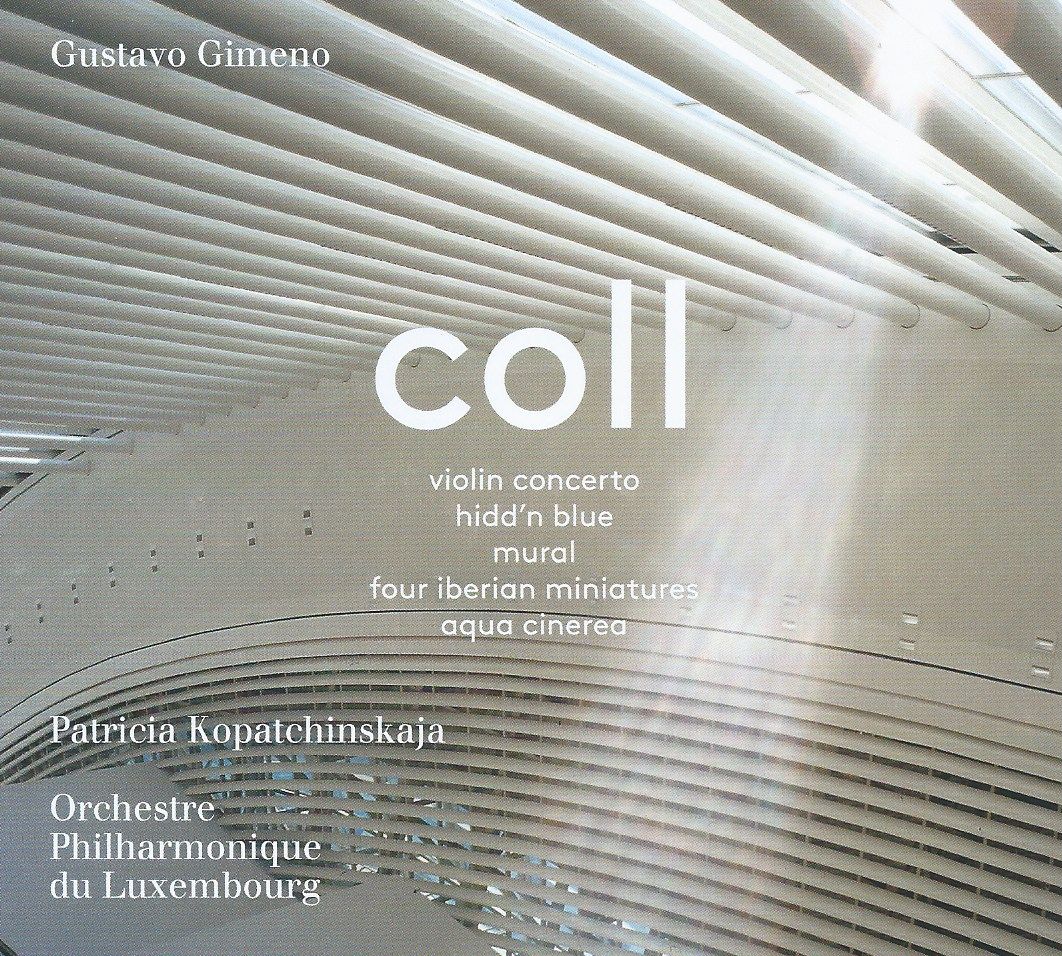Violinist Patricia Kopatchinskaja and the music of Francisco Coll
Kudos to Pentatone for daring to release this disc and to Kopatchinskaja and Gimeno for their indefatigable belief in Coll's music

We met the music of Francisco Coll before on Camerata Bern's wonderful Alpha disc Plaisirs illuminés. Here's the first full disc devoted to his music, with Patricia Kopatchinskaja again championing his music in the Violin Concerto (written for her in 2019) and the Four Iberian Miniatures of 2014; the programme also includes three orchestral pieces and covers the gamut of this young composer's output, starting from the "early" Hidd'n Blue, Op. 6 (2009-11) and Aqua Cinerea, Op. 1 for chamber orchestra (composed 2005, revised 2019).
Coll s a pupil of Thomas Adès, and his music partly imhabits Adès' wildly complex worlds. But Coll has journeyed to an individual voice. Let's re-programme the disc for the purposes of this article and hear not one but two performances of Hidd'n Blue, a piece that was written shortly after Coll's arrival in London and which was performed both at LSO St Luke's (under François-Xavier Roth) and at the Barbican Hall under Adès. It is a riot of contrasts, intensely colourful and virtuosic. Here's the performance form the disc, the Orchestre Philharmonique de Luxembourg under Gustavo Gimeno:
... and here's a bonus video of the RTVE Orchestra under Nuno Coelho:
As you can hear, the piece is near-volcanic in its effect.
The conductor on this disc, Gustavo Gimeno, had a vital part to play in the link between Kopatchinskaja and Coll. On a train journey to a concert in Valencia, Gimeno showed the violinist a score of Coll's Hyperlude IV for violin; Kopatchinskaja encored the piece at the concert that very night!. Here's an NMC performance of that very piece by Jonathan Morton:
Coll quotes Hyperlude IV in the second movement of his Violin Concerto, a piece dedicated to Kopatchinskaja. The Concerto explores anger (the first movement, "Atomised"), sensuality (the seond movement, "Hyperhymnia") and finally pure vivacity (the last movement, "Phase"). The piece fully exploits Kopatchinskaja's virtuosity over a half-hour span. Let's hear the "softer" side of Coll's output in the central "Hyperhymnia" - how utterly sweet Kopatchinskaja's extreme high register sounds here in Pentatone's superb recording:
The finale demonstrates just how the power of top-notch soloist, conductor and orchsetra can present hard-hitting contemporary music in the very best way. Rip-roaring energy of the sort normally encountered in live performance meets the technical excellence of Pentatone:
Here's a characteristically atmospheric video introduction to the Concerto by Patricia Kopatchinskaja:
The other work for violin and orchestra is Four Iberian Miniatures (with chamber orchesra, 2014). No doubting the flavour of the music here, at least at the outset. Unsurprisingly, some deconstruction goes on:
Jota, fandango and flamenco are all referenced but this is a largely invented folk world (an idea that reminds me of the music of Esa-Pekka Salonen, and particularly that composer's Piano Concerto). Personally, I find the disjunct third movement most appealing, but he most overtly "fun" movement is the slightly bonkers finale:
The symphonic piece Mural for large orchestra (2013-15) includes within its title a clue to Coll's collage-like way of writing. This piece is dedicated to the present conductor, Gustavo Gimeno. When it was played at the BBC Proms it was labelled a "grotesque symphony". Follow this link to my review of that performance on August 5, 2017 by rthe National Youth Orchestra of Great Britain under Thomas Adès, which includes a full introuction to this piece. It is so good to hear Mural here in all its effervescent, multifaceted glory. Let's hear the vivacious second movement (which lasts less than two minutes):
One does wonder if there is a Mahlerian element to Coll's Mural: Mahler said a symphony should contain the world, and at times it seems as if Coll sets out to do just that. In fact the expressive string lines of the finale, with their huge intervallic leaps and screaming registeral extremes, put me in mind of the first movement of Mahler's Tenth Symphony:
The disc ends with an "ear;y" work, Aqua Cinerea, Op. 1 (2005/2019), a work of huge colour and talent. Already, it points towards the sonic delights of the later works - and we should remember that those works are "later" not "late": astonishingly, Coll was born in 1985 and is therefore still in his thirties. We will doubtless hear much more of this unqiue, individual voice. Kudos to Pentatone for daring to release thsi disc and to Kopatchinskaja and Gimeno for their indefatigable belief in Coll's music.
This is full 80 minutes of music that challenges and delights in equal measure; currently discounted at Amazon at the link below, this is a stimulating, exciting and vibrant disc.
Coll's music is published by Faber Music, London.
